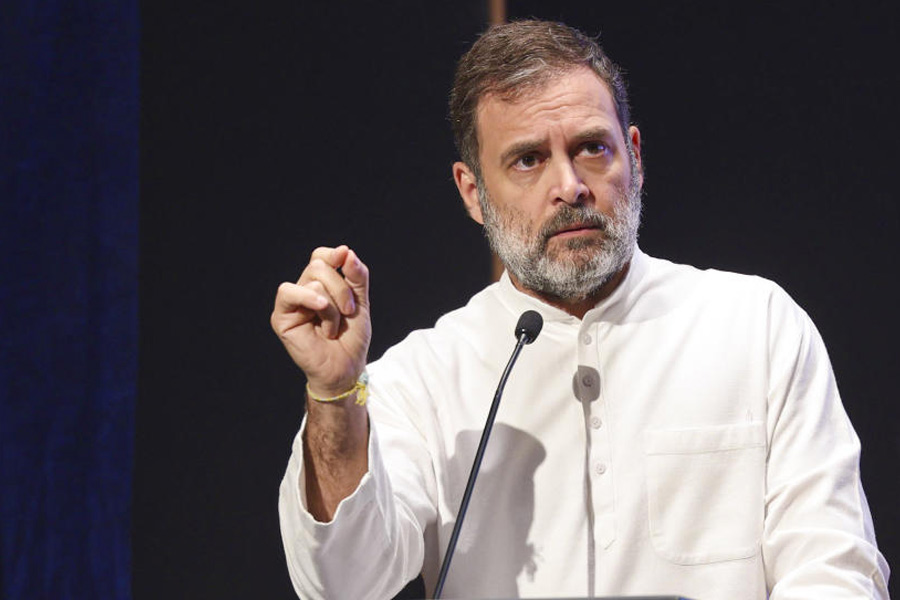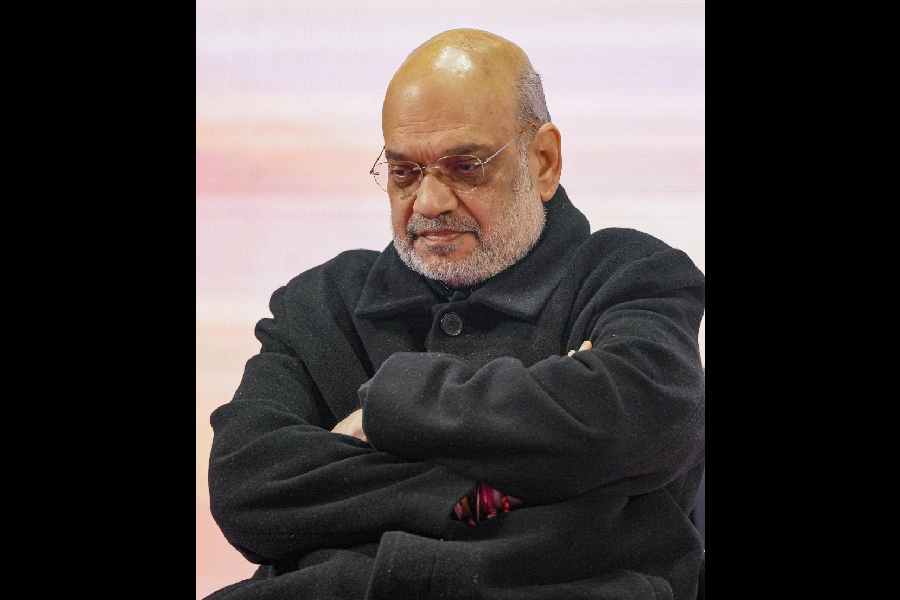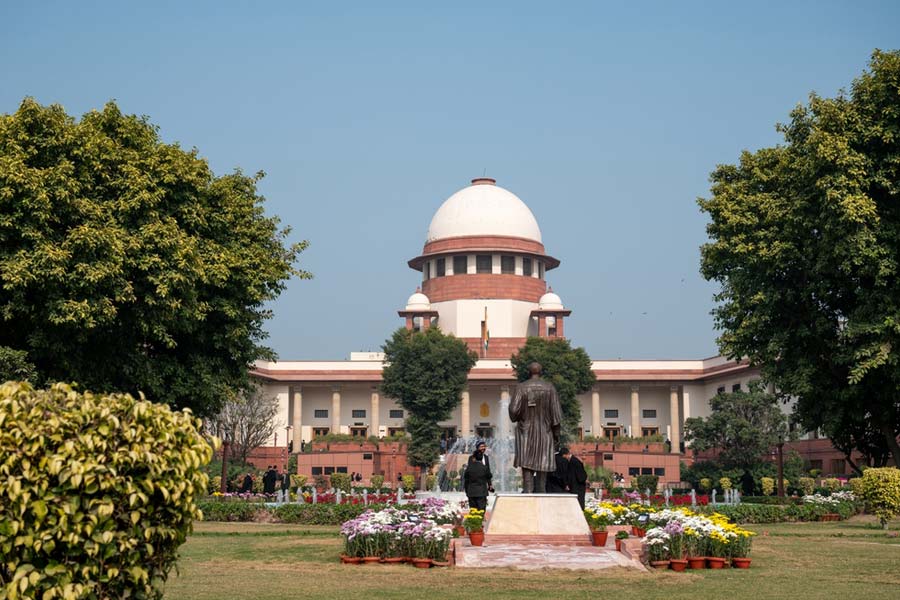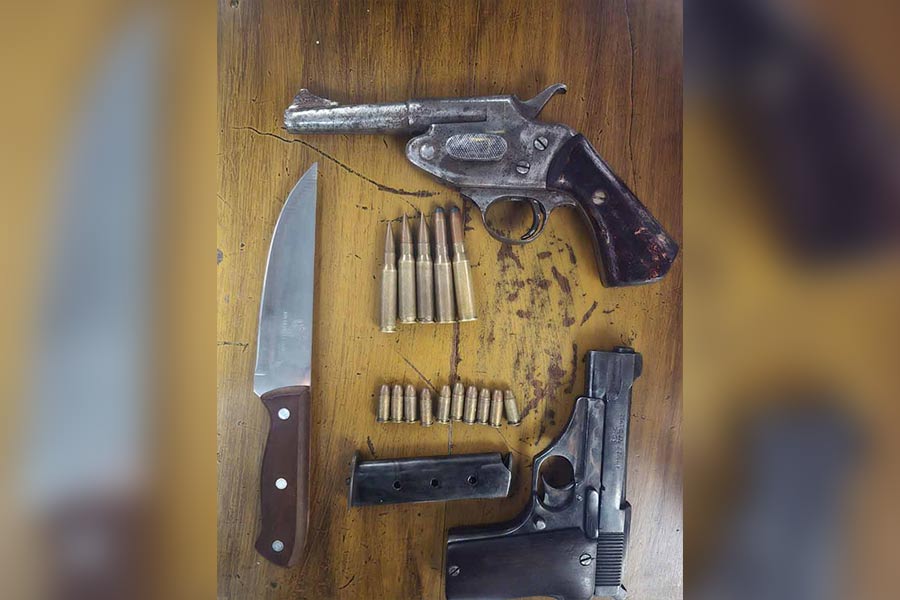Lured by the water hyacinth flower’s beauty and vibrant purple colour, a Thai princess brought the plant species to her garden. Infamous for being crazily invasive, the water hyacinth thus spread throughout South Asia.
Not just South Asia, the US also suffered from this invasive species that travelled to the country from its origin — the Amazon — and clogged its water transport.
To solve the problem, the country released hippopotamuses from Africa into the rivers so that the animals could feed on the water hyacinth and also produce meat which would solve the country’s meat crisis in the 1900s.
Such nuggets of information came alive in Travelling Plants, an exhibition at the Indian Museum that explores how plants travelled because of human intervention for aesthetic, political and economic reasons.
Inaugurated on Friday by the Indian Museum director, Arijit Dutta Chowdhury, along with the Goethe Institut Calcutta director, Astrid Wege, Travelling Plants, a collaboration between the Indian Museum, the Goethe Institut, Calcutta, and the Botanical Survey of India, will be on display till October 4.
The exhibition results from a multi-phase project led by the Goethe Institut, Chennai, in collaboration with Alliance Francaise of Madras and the Institut Francais de Pondicherry (IFP).
Beginning with a residency centred around the herbarium at IFP in March 2024, Travelling Plants brings together the works of Karolina Grzywnowicz from Germany, Wendy Thermia from France, Waylon D’souza and Rashmimala from India, who were selected for their creative practices.
The Botanical Survey of India (BIS), too, has added to the exhibition from its collection.
Dutta Chowdhury said: “The BSI has enriched the exhibition further by adding three kinds of collections from their archives, economic plant portraits, 19th and 20th-century correspondence between Indian and European scientists, and 19th-century botanical paintings called Company paintings.”
Leading a curated tour through the exhibition, Katharina Gorgen, director, Goethe Institut, Chennai, said the herbarium at IFP, Pondicherry, had 27,000 herbal sheets, the largest collection of south Indian plants.
“They (the sheets) were made for science but have become beautiful pieces of art, too. You could easily transport information in these sheets at a time when it was difficult to transport plants,” she said.
The other way to transfer scientific information was through botanical drawings which were done during the days of the East India Company by doctors, who developed an interest in botany because they needed healing plants.
“People were dying and the British needed to tap into the indigenous plants to
heal. Also, you need to keep your army fed, so they needed to find commercial plants
with economic value,” said Gorgen.
BSI scientist Manas Bhowmick, who curated the botanical drawings from BSI’s collection for the exhibition, said: “The botanical paintings were created between 1948 and 1971 when after World War II, the museum employed artists from the Government College of Art to create these paintings. I selected 23 of these paintings. Besides, there are Roxburgh’s paintings. William Roxburgh, the first superintendent of the Indian Botanic Garden, prepared lifesize paintings of plants drawn by descendants of Mughal court artists. There are 2,542 such paintings at the herbarium in the Indian Botanical Garden, Howrah. I have selected 15 original paintings.”
Talking about an installation at the exhibition on changing landscape, Gorgen said how the British came to plant eucalyptus trees in the Nilgiris that entirely changed the landscape of the region and affected the lives of the indigenous communities who were dependent on the original grasslands of the Nilgiris.
“What we see in these installations is that the Nilgiris was the oldest grassland. The Toda community was an indigenous community of the Nilgiris. They were affected when they lost the grasslands. One of the artists’ work is to get back to grasslands. However, the Toda community has adapted to the eucalyptus. Now if you take the eucalyptus out again then you are forcing the community again to lose a lifestyle,” she said.
The installation also included a shawl that depicted the knowledge system of the indigenous people. The Toda’s embroidery on the shawl is archival ecological information.
Being a nomadic community they had to pass on the knowledge of how to grow plants, where to find specific plants, and where to find which kind of grassland to the next generations.
“So in their embroidery, they would give an archive of their landscape. From being an archive it has now become a decorative art and at the same time scientists have realised that we also need to look at scientific archives outside our systems if we want to reconstruct historical landscapes,” said Gorgen.










